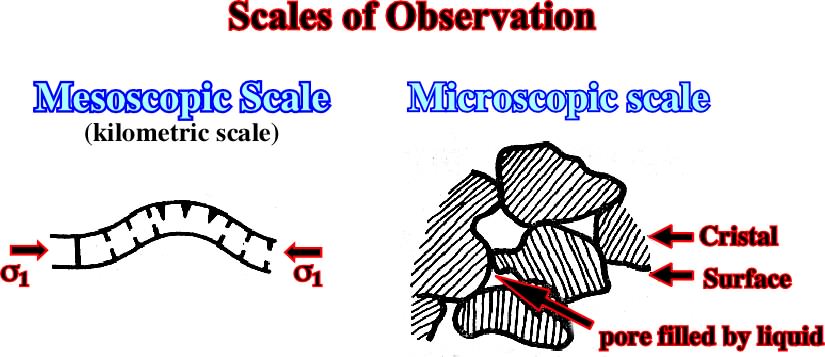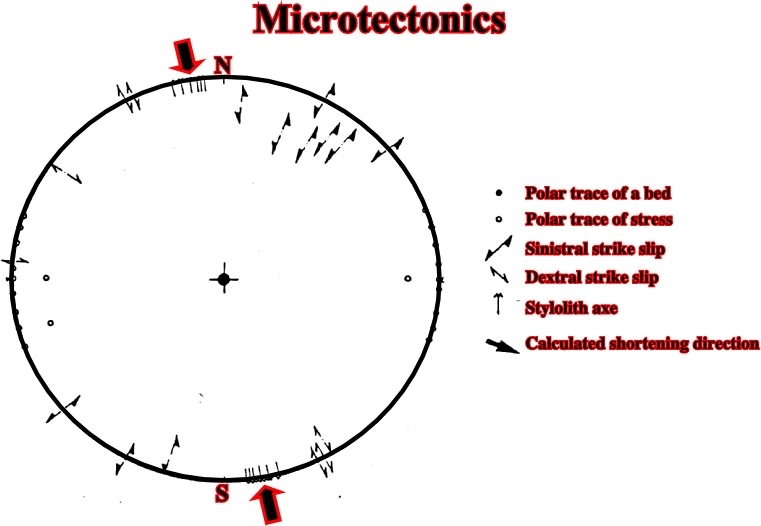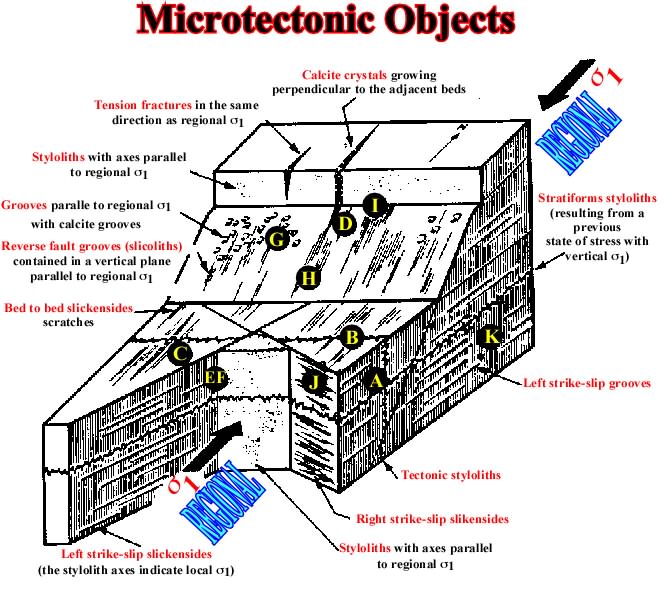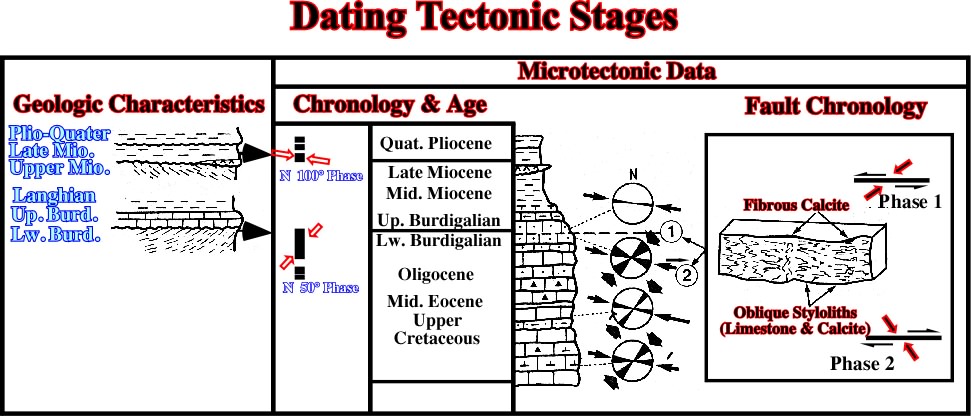
Porto, Portugal

Contents: 2.1- Tectonic Stages 2.2- Regional Stresses 2.3- Structural Interpretation of an Area 2.4- Structural Analysis 2.5- Dating Tectonic Stages 2.6- Stress Lessening 2.7- Deformation Tracks
The reaction of rocks subjected to regional stresses, will appear as a permanent continuous deformation. However, when this permanent deformation is too great, this will lead to deformations with failure (faults, fractures) and to folding.
This stage of deformation is reached more easily if the sediments are subjected to stretching (as opposed to sediments subjected to shortening). The stress threshold is considerably less for traction than for compression. These paroxysms correspond to tectonic stages.
A tectonic stage is a period, limited in time, during which a given area is subjected to shortening (or lengthening) of constant direction. The concept of tectonic stage is valid only if we specify:
- The period to which it applies and,
- The scale of the affected area.

Fig. 68- The rocks are heterogeneous, discontinuous and generally anisotropic. The concepts of stress is valid only at a given scale and a given time
There is every reason in the world for a stress field not to be homogeneous at a given time and in a given region. As soon as there is an irregularity in a stress field, the deformations (flowing, fractures, etc.) tend to cause the stress concentrations to disappear.
This explains the relative homogeneity of deformation fields on a regional scale, which has been observed in geology and microtectonics and it justifies the concept of regional stress for a given period and a given area.
2.3- Structural Interpretation of an Area
Complementary to purely descriptive studies of a area (cartography, etc.,), a structural interpretation is always prerequisite. As it is often difficult to observe directly the earth movements (faulting, folding, etc.), it is necessary to proceed indirectly by trying to determine, for each tectonic stage and corresponding to a time period, the orientation of:
(i) Regional
1 (shortening stage).
(ii) Regional
3 (extension stage).
For each of these stages, the movement along the faults and the deformations obey certain stress orientations. In other words, knowing the stress orientation, geologists can logically predict:
(a) The movement of the faults;
(b) The type of structures;
(c) The more likely location of the structures.
The interpretation of field data and/or of seismic data enables to trace back the regional stresses and, for a given period corresponding to a tectonic stage, to define the direction of shortening (for a compression stage) or the direction of lengthening (for an extensional stage).
a) Microtectonics
The direction, dip and plunging of certain tectonic objects are directly measured in the field. Then, all of these data for the same measurement site, is projected on a stereogram (fig. 69). The interpretation of the stereogram gives one, or several, directions of local shortening (for each site).

Fig. 69- Determination of the shortening direction using micro-tectonic objects.
These operations are repeated for the entire studied area. If all of these interpretations lead us to believe that there were one or several homogeneous shortening stages for a whole area, it can be assumed that these stresses were regional.
b) Objects used in Microtectonics (fig. 70)
- On the shearing planes (strike-slip), reverse faults, normal faults:
(i) Gouge marks, (ii) Dissolution figures, (iii) Crystal growth.
- Open gash fractures;
- Tectonic stylolites;
- Compression folds:
(i) Simple compression fold.
(ii) Folds associated with reverse faulting.
(iii) Folds associated with strike-slip faulting.

Fig. 70- Theoretically sketch illustrating the main micro-tectonic objects associated with the maximum effective stress.
The analysis of the deformations must start with the most recent formations. If deformations exist, we presume that one or several compression or extensional stages have occurred. We, therefore, elucidate the intervention of one or several tectonic stages defined by their nature and by the direction of shortening (or lengthening).
If several tectonic stages have occurred, the analysis may possibly provide elements of relative chronology, thus establishing the order of appearance of the tectonic stages. The analysis is then continued on the older stratigraphic formations, where theoretically, we should find the deformations caused by the recent tectonic stages which have already been brought to light (fig. 71).

Fig. 71 – Determination of the age of two tectonic phases using micro-tectonic objects.
On a scale of hundreds kilometers, at a given time, a lessening of the deformations, and therefore of the stresses, is observed (fig. 72).

Fig. 72- Pedagogically one can say that different strains are developing with the lessening of the tectonic stress. Actually, there is no lessening of effective stress but a decrease on the strength deformation of the sediments.
Uplift and deformations absorb energy. Notice that the lessening of effective stresses is just a pedagogic hypothesis. Actually, within a lithospheric plate (mid oceanic ridge - subduction zone or mid-oceanic ridge - transform fault, etc. ) the effective stress are roughly constant. On the contrary, the deformation threshold of the sediments changes laterally.
In a compressional tectonic regime, deformations are often confined to “deformation tracks” or "couloirs", that is to say, rigid blocks transmit stresses without apparent deformations. The schematic geological cross-section through the foreland of the Zagros (fig. 73) illustrate the “couloir” of deformation with which are associated several oil fields, such as East Baghdad Field.

Fig. 73- Rigid blocks transmit stresses without apparent deformations.
to continue press
next
Send E-mail to ccramez@compuserve.com or cramez@ufp.pt with questions and comments about these notes.
Copyright © 2001 CCramez
Last update: March, 2006